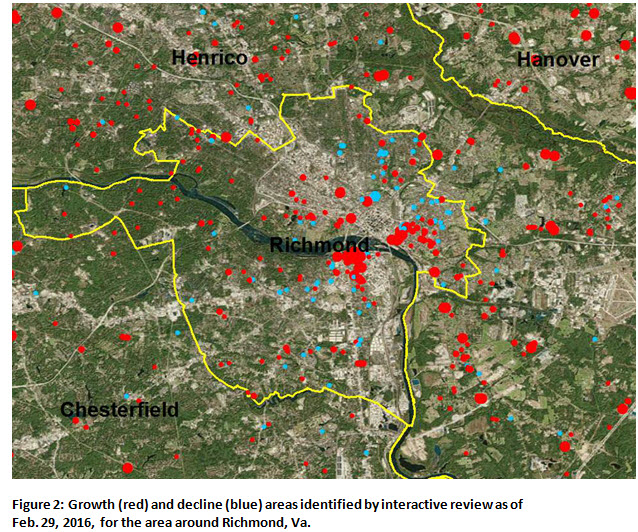Reengineered In-Office Address Canvassing Methods to Increase Efficiency and Reduce Costs of 2020 Census
Reengineered In-Office Address Canvassing Methods to Increase Efficiency and Reduce Costs of 2020 Census
In-office address canvassing allows the Census Bureau to update its address list to ensure a complete and accurate census. These assessments will increase the efficiency of the census and reduce the expensive in-field workload.
The U.S. Census Bureau updates its address list before each census to ensure that each person in the United States and is correctly counted where they live on Census Day. For the 2010 Census, field workers traveled to roads and places where people were thought to live across the U.S. in order to update the Master Address List in an operation called address canvassing.
Following the 2010 Census, research indicated that the housing inventory, and therefore addresses, in many neighborhoods did not change from one census to the next, and that physically walking each area to make updates to the address list is not necessary. Research also indicated that the Census Bureau can reliably detect and classify such stable areas. Therefore, for the 2020 Census, the Census Bureau is taking a different approach, one that would target fieldwork only where it is needed. The use of reengineered in-office and in-field canvassing methods is estimated to save the American taxpayer approximately $900 million in costs during the 2020 Census.
The Census Bureau has divided the nation into more than 11 million small geographic areas called “blocks.” In-office address canvassing will assess and classify each block to determine whether in-field canvassing is necessary or whether an in-office review can produce a complete and accurate address list. The first major step of the operation is the “interactive review.” This began in the fall of 2015 and, to date, reviewers have assessed and verified more than 1.7 million blocks (about 15 percent of the national total).
The interactive review includes three major steps that together take an average of 80 seconds per block to complete. In the first step, reviewers compare satellite imagery from the 2009 timeframe (when 2010 Census address canvassing occurred) and the current timeframe to detect changes in the number of residential buildings. In the second step, reviewers assess whether the current census address list accurately reflects the reality on the ground based on the number and type of structures visible in the imagery. In the final step, reviewers assess the structures in the imagery and the property lines (parcels) to determine whether the block is “built-out” or has additional room to grow.

Taken together the three steps provide a rich and detailed profile for each block, indicating what housing changes have occurred since the last census, how well the Census Bureau’s address list is keeping up with the changes and how likely changes are to occur in the future. Blocks with detected changes or deficiencies will move on to a second process in which a staff member will attempt to update the address list in the office. If the second step is not able to resolve the issue, the block will go to the field for canvassing.
To date, the interactive review has determined that about 69 percent of housing units are located within passive blocks that do not require action, approximately 21 percent of housing units are located in active blocks that do require action, and about 10 percent of housing units are located within blocks that are on hold.
Additionally, reviewers have classified about 38 percent of the blocks reviewed (containing approximately 53 percent of the housing units in the reviewed blocks) as being not only stable and correct but also “built-out” (completely covered by buildings or undevelopable land like parks) and, thus, relatively unlikely to change in the near future. These figures, while preliminary in nature, support the initial research findings that the majority of blocks in the nation do not require costly in-field address updating.
With the interactive review off to a successful start, we have embarked on two other major research projects critical to the overall success of in-office address canvassing. We must develop methods of assessing and capturing the housing change that we cannot identify via imagery analysis, including apartment splits and redevelopment within existing buildings. And to make sure that we do not miss changes that occur later in the decade, we must also test and implement a set of “triggers” that will flag blocks for re-review.
In-office address canvassing allows the Census Bureau to update its address list to ensure a complete and accurate census. These assessments will increase the efficiency of the census and reduce the expensive in-field workload.

To view the 2020 Census Operational Plan, click here.
To view the 2020 Census Detailed Operational Plan for the Address Canvassing Operation, click here.



